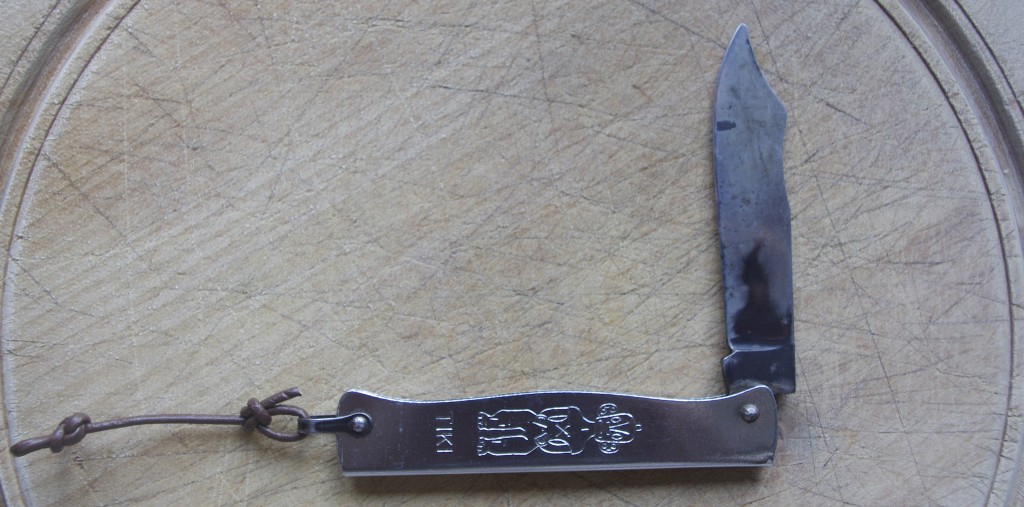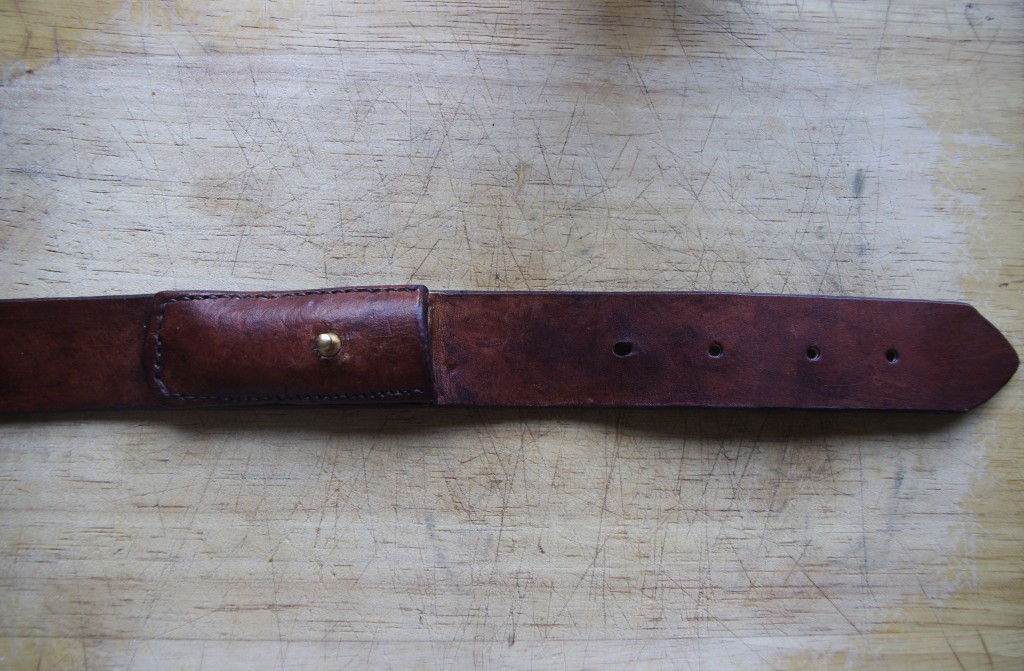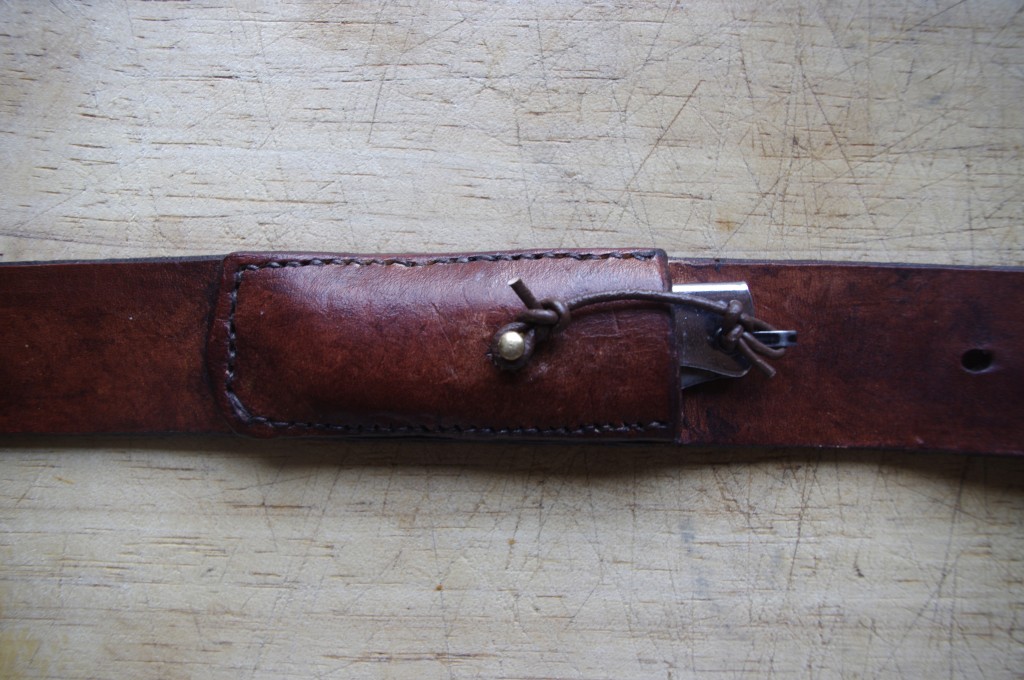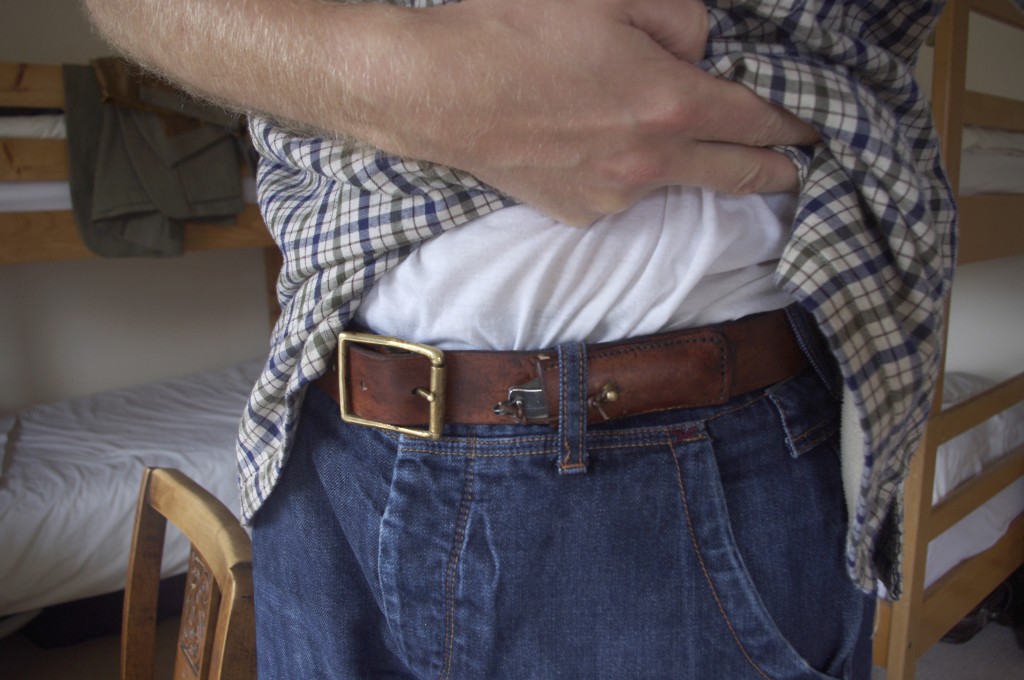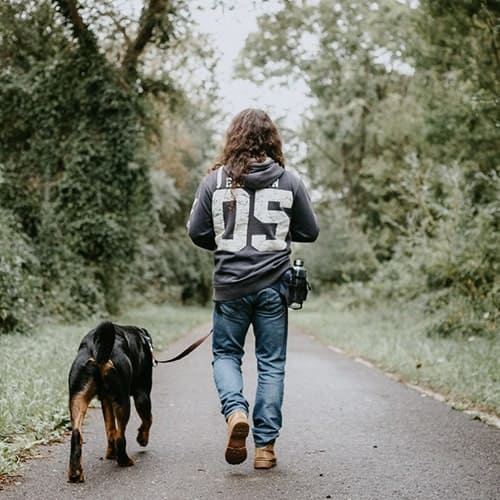Last week, while I was flicking through Håkan Ludwigson’s photography book Balls and Bulldust, trying to decide on a favourite picture for my coffee table books blog, I noticed that a lot of the stockmen in his pictures wore belts customised with an integral pouch for their pocket knife.
Speaking as a fellow who usually keeps a penknife about his person, but who is always looking for a way to have less crap in his pockets, it seemed like rather a fine idea, so I set about creating one of my own.
Adapting the idea
Clearly, my requirements are slightly different to those of a bunch of outback cattlemen. To start with, they were all toting fairly chunky penknives of the classic, three-bladed ‘stockman’ design.
In my own everyday life, however, I don’t spend a lot of time castrating beasts. I use my pocket knife for tasks like sharpening pencils, eating apples, cutting twine or tape, opening envelopes and parcels, paring lemon rind for drinks, whittling, harvesting garden morsels for my pet tortoise, and any one of a thousand minor tasks. I don’t need several blades, and I also have questions of legality to consider. Anything I carry has to be non-locking and with a blade less than three inches (which is all you need anyway unless you’re out camping).
I reckoned on a slim profile being more comfortable, practical and subtle on a belt, so I decided to make one to fit a Douk Douk Tiki petit. If you’re not familiar with these exotic-sounding objects then they’re a bit of an icon of French mass-produced knife-making, especially popular in North Africa in the mid-20th century. I thought they’d stopped making them years ago, but then I came across one in a shop in Guisborough, of all places. Apparently Cognet, the firm that produces them, is still going, turning out simple and inexpensive but robust slip-joint folders, with oddly characterful Turkish clip points and Pacific designs on the blade or handle. The knives have a good strong back-spring, and with very little work you can put a razor edge on them. Plus when they’re closed, the handle end is square enough to make a serviceable bottle opener, which is always useful.
The materials
I ordered a wide strip of belt leather and some dark brown leather stain from a tannery in Northampton, and a rolling buckle, some brown thread and a little bag of Sam Browne studs from an online leather craft store. Apart from that, I already had the tools I needed, which meant my full list of bits and bobs was as follows:
- awl
- leather punch
- Stanley knife
- saddler’s needles and brown linen thread
- beeswax
- leather edging tool
- Sam Browne brass stud
- short length of 2mm leather thonging
- 38mm brass roller buckle
- heavyweight natural cowhide leather strip (38mm)
- all-in-one stain/finish.
The method
- I started by marking up the leather, using my everyday belt as a template. I marked the length, the holes, and where I would put the groove and fold to fit the buckle.
- I cut a short, narrow tongue out of the centre of one end of the belt to allow me to fold it around the buckle, then I fitted the buckle and made my stitch holes with the awl. I waxed the thread, then saddle-stitched the end over to secure the buckle.
- I checked the length and hole positions again to make sure I hadn’t altered anything in the process of getting the buckle on, then I punched out the holes and cut the belt to length. I shaped the loose end with the Stanley knife, then rounded all the edges with the edging tool (a very satisfying job). To all intents and purposes, I now had a belt.
- I took the section I’d trimmed off the end, and soaked it in water to make it more pliable, then I placed the knife where I wanted it to go on the belt, and shaped the piece of leather over the top of it. So as not to interfere with the functionality of the belt, this needed to be at the opposite end from the buckle, and not too close to the last hole. You could also put it on the back of the belt if you wanted, but I’d avoid the hip area.
- I used the awl to poke stitching holes all the way round the edge of the leather patch, taking care to go through the belt beneath.
- I fitted the Sam Browne stud using the punch and the Stanley knife to sink it.
- I tidied up the piece of leather, using the Stanley knife and the edging tool, then waxed a long length of thread and saddle stitched the pouch onto the belt. To ensure a tight fit, I stitched it round the knife, checking it every now and then to make sure I could still withdraw it.
- Using rubber gloves and kitchen roll, I wiped the belt down with stain to colour it a dark brown colour. I left it to dry, then buffed it and gave it a good polish with some leather preparation. I should probably have done this at the beginning, and just touched up the cut edges later on.
- The knife fitted very snugly, and there was very little danger of it sliding out, but I am a careful fellow*, so I attached a short length of leather thong to the Douk Douk. I put a tight angler’s loop on the other end, then popped it over the Sam Browne stud to make sure the knife was secured.
And there you go. As a first attempt, it’s far from perfect, but it was a diverting enough way to spend a Sunday lunchtime.
*This is not absolutely true.
